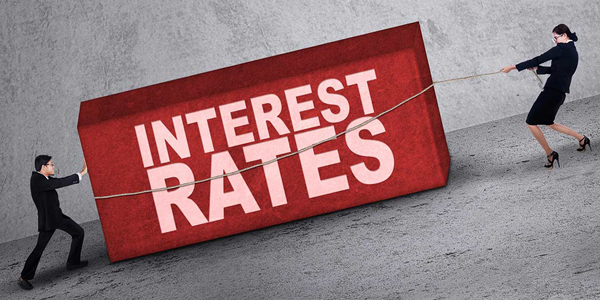Home /
Money Blog
Rising Rates and House Buying
Note: You can use any financial calculator to do this problem, but if you want the BEST, you can
get our
10bii
Financial Calculator for iOS, Android, Mac, and Windows!

THE SCENARIO
The Federal Reserve
recently announced that it's going to be raising interest rates in the near future, and then probably two other times in 2018. But what does this mean for you? Well, probably a lot of things, both direct and indirect, even if you don't live or work in the United States. However, what I'm going to focus on for this post is how rate hikes might affect how much money you could afford to borrow (in this case, to buy a house).
Let's say that you've figured out that you can afford to pay $2,000 per month for the principal and interest on a mortgage*. And let's say that today, you could get a 30-year fixed mortgage at 4.125%. Let's also say that after one or more rate hikes, the interest rate on such a mortgage would rise to 5.25%.
The question: How much lower would the amount you can borrow be
after the rate hikes be than the amount you could borrow
before the rate hikes?
* This simplifies the question a bit, as housing costs also tend to include things like insurance and property taxes, which tend to go up with the value of the property. We're going to ignore those details for this question.
THE SOLUTION
This question is relatively straightforward: figure out the borrowed amount at two different interest rates, and compare the two numbers.
First things first, make sure the calculator is using 12 Payments per Year.
Loan 1: Borrowing at 4.125%
N: 360 (30-year fixed-rate mortgage)
I/YR: 4.125 (4.125% interest rate on the loan)
PV: (This is what I'm trying to find)
PMT: -2000 (You can afford $2,000 for your loan payment)
FV: 0 (The loan amortizes fully)
If you borrow at 4.125%, you can borrow $412,669.16.
Loan 2: Borrowing at 5.25%
N: 360 (30-year fixed-rate mortgage)
I/YR: 5.25 (5.25% interest rate on the loan)
PV: (This is what I'm trying to find)
PMT: -2000 (You can afford $2,000 for your loan payment)
FV: 0 (The loan amortizes fully)
If you borrow at 5.25%, you can borrow $362,185.18.
The Answer
At the higher interest rate, you can borrow $412,669.16 - $362,185.18 = $50,483.98 less than you can at the lower interest rate, keeping all other terms the same.
There are lots of implications of changes in interest rates, but one of the easiest to understand and calculate is the effect on newly-originated loans. Do you feel an increased sense of urgency to borrow when it seems like rates are going to be increasing? Have you seen or heard any advertising encouraging you to borrow with rising rates as a justification? Have I missed anything important here? Let us know in the comments!
